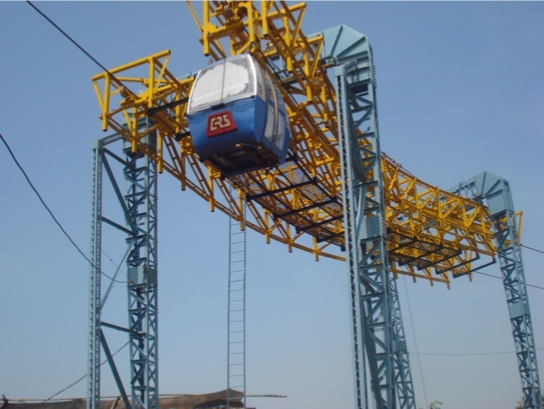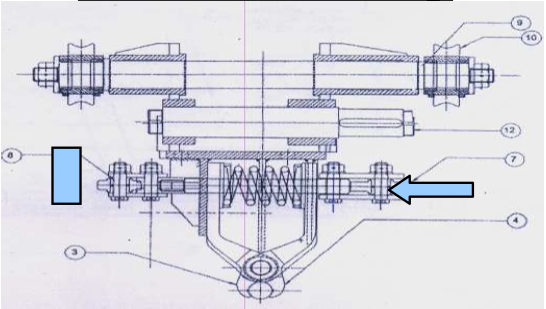
CURVO Ropeway’s angular module. Image by CSR.
A great thing about researching CPT is that sometimes you never know what you’re going to stumble onto next. Recently, I came across a ropeway manufacturer in India called Conveyor & Ropeway Services where a few years back they announced that they’ve invented a new type of aerial transit called the CURVO Ropeway. Without going into much detail at this time, some of the purported features of this technology include:
- Cabin capacity: 8-10 persons
- Tower “kerb” spacing: Every 80-90m
- Tower footprint: 2.0 sq.m.
- Line capacity: 2,000-2,500 pphpd (single track); 4,000-4,500 (double)
- Cost: USD$27 – 50 million per kilometre
- Average Speed: 12.5km/h
While the stats above are comparable to a MDG (if not more expensive, and lower capacity), it appears that main difference between the CURVO and its existing counterparts lies in its gripping mechanism. Since I’m not an engineer by trade, some of the terminology used to describe the technical features of the CURVO grip is not well understood. However, as I know some of our readers are more technically-oriented than I am, an excerpt from the original article has been pasted below that describes the company’s innovation:

CURVO Grip. Image by CSR.
So in plain language, it seems that CURVO’s claim to fame is that their cabins can make sharp corners without detaching from the propulsion cable. Exactly how many degrees it can turn and navigate is unclear. But based on a video that the company has released, it seems that their prototype line have modest cornering capabilities (skip to 6:41).
However, we already know from existing systems (i.e. Kolmarden Wildlife Park Cable Car) that unidirectional lines can already accomplish significant turns with light infrastructure. How this is different or similar to those features requires more investigation. If anything, perhaps due to geographic and language barriers, the video has created just as many answers as there are questions.
I always find it incredibly interesting to see how different companies around the world are constantly developing ideas and techniques to solve our urban transport challenges. Whether this technology catches on is unknown at this time — however, West Bengal and Dhaka, Bangladesh is reportedly in the midst of investigating its potential feasibility.

2 Comments
Interesting , but this kind of grip makes impossible to to have compression sustains/rollers , so its limited to horizontal lines.
So does that mean the CURVO system cannot have any changes in elevation/height?